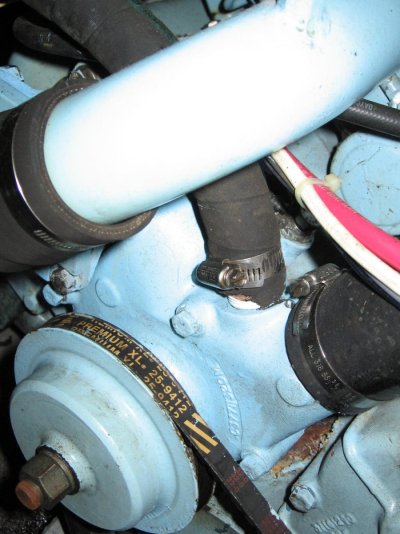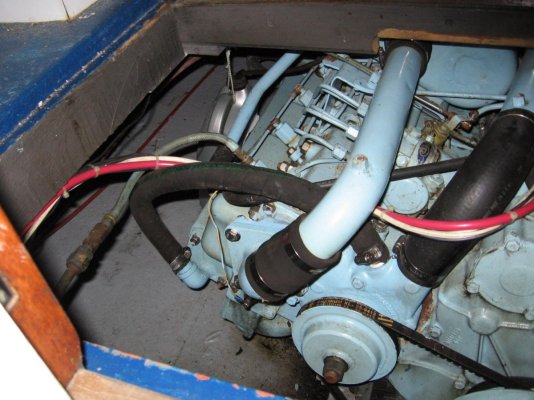Driftless
Veteran Member
RP:
The Perkins service manual I have doesn't give specifications on blowby, compression or exhaust temperature. Nor do any of the suppliers I use have a compression test adapter to fit the Perkins engine.
You can get a reasonable idea of blowby by measuring crankcase pressure with a manometer or low pressure gauge on the dipstick tube. I don't have any guidelines from Perkins, but we generally use a rule of thumb that it should be less than one inch of water column assuming that your crankcase breathers are open.
We just finished the in-frame overhaul of a 6-354 in a piece of construction equipment, but that was due to having been started with ether and two pistons being destroyed. It's a PIA because of having to press in the sleeves, but other than that pretty much routine.
The one in "Rise 'n Shine" needs a rebuild on the sea water pump - I tried and failed to get the impeller out on Saturday because the cover screws are frozen - two of them refuse to turn with a screwdriver (Never-Sieze is called for...) and rather than wrestle with it in the boat, I'm going to yank the pump, bracket & all and give 'er a dose of love. New seal, coupling element, impeller, the works, mainly because I have no idea how long this impeller has been in there and from the looks of the pump it may have been a long time.
Also, I discovered the Vee-band clamp that holds the wet elbow to the exhaust manifold was loose. So, I'll pull it as well and give 'er a thorough inspection. My inclination is to order a new one just because of the age, but I'll have a look at the existing one first. This unit has at least one failed thermostat, so I'll replace them as well.
When all that is said & done, it should be in pretty good shape for next year.
Cheers!
J.S.
The Perkins service manual I have doesn't give specifications on blowby, compression or exhaust temperature. Nor do any of the suppliers I use have a compression test adapter to fit the Perkins engine.
You can get a reasonable idea of blowby by measuring crankcase pressure with a manometer or low pressure gauge on the dipstick tube. I don't have any guidelines from Perkins, but we generally use a rule of thumb that it should be less than one inch of water column assuming that your crankcase breathers are open.
We just finished the in-frame overhaul of a 6-354 in a piece of construction equipment, but that was due to having been started with ether and two pistons being destroyed. It's a PIA because of having to press in the sleeves, but other than that pretty much routine.
The one in "Rise 'n Shine" needs a rebuild on the sea water pump - I tried and failed to get the impeller out on Saturday because the cover screws are frozen - two of them refuse to turn with a screwdriver (Never-Sieze is called for...) and rather than wrestle with it in the boat, I'm going to yank the pump, bracket & all and give 'er a dose of love. New seal, coupling element, impeller, the works, mainly because I have no idea how long this impeller has been in there and from the looks of the pump it may have been a long time.
Also, I discovered the Vee-band clamp that holds the wet elbow to the exhaust manifold was loose. So, I'll pull it as well and give 'er a thorough inspection. My inclination is to order a new one just because of the age, but I'll have a look at the existing one first. This unit has at least one failed thermostat, so I'll replace them as well.
When all that is said & done, it should be in pretty good shape for next year.
Cheers!
J.S.


